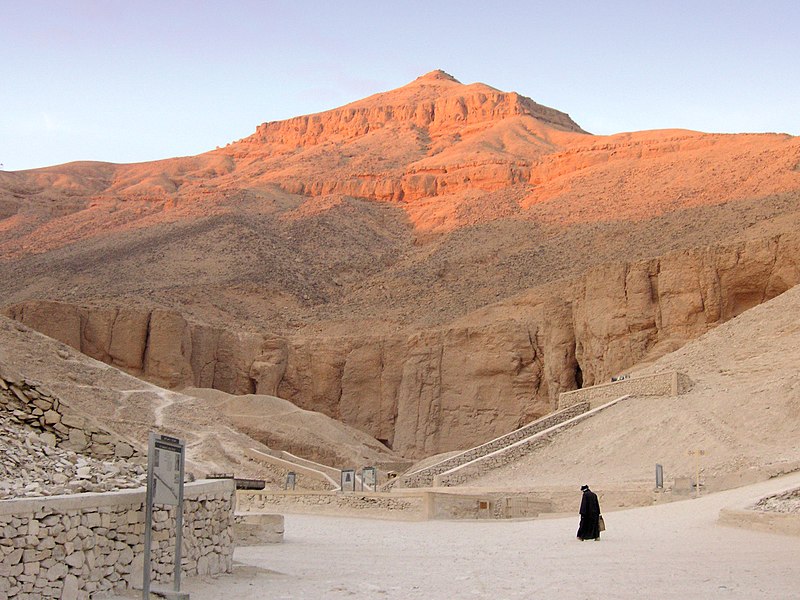The Valley of the Kings, nestled on the western bank of the Nile River near Luxor in Egypt, stands as one of the most iconic and awe-inspiring archaeological sites in the world. Renowned for its vast necropolis containing the tombs of ancient Egyptian pharaohs, queens, and nobles, the Valley of the Kings is a testament to the grandeur and splendor of Egypt’s New Kingdom era, spanning from approximately 1550 BCE to 1069 BCE.

The Valley of the Kings served as the burial ground for pharaohs and other elite members of ancient Egyptian society for nearly 500 years, beginning with the reign of Thutmose I and ending with the reign of Ramesses XI. During this time, the valley became a site of immense religious and cultural significance, as pharaohs sought to secure their eternal afterlife by constructing elaborate tombs filled with treasures, artworks, and inscriptions.
One of the most remarkable aspects of the Valley of the Kings is the sheer number and complexity of its tombs, which were carved deep into the limestone cliffs that line the valley. Over 60 tombs have been discovered in the valley so far, each with its own unique layout, decoration, and architectural features. While many of these tombs were looted in antiquity, others have been remarkably well-preserved, offering valuable insights into ancient Egyptian burial practices and beliefs.
Among the most famous and impressive tombs in the Valley of the Kings is the tomb of Tutankhamun, the young pharaoh who ruled Egypt during the 14th century BCE. Discovered by British archaeologist Howard Carter in 1922, the tomb of Tutankhamun is renowned for its stunning treasures, including the iconic golden mask that adorned the pharaoh’s mummified remains. The discovery of Tutankhamun’s tomb sparked worldwide fascination with ancient Egypt and remains one of the most significant archaeological finds in history.
In addition to the tomb of Tutankhamun, the Valley of the Kings is home to a number of other notable tombs, including those of Ramesses II, Seti I, and Thutmose III, each of which boasts intricate reliefs, colorful paintings, and hieroglyphic inscriptions that depict scenes from ancient Egyptian mythology, religious rituals, and the pharaoh’s journey to the afterlife.
Exploring the Valley of the Kings is a fascinating and immersive experience that offers visitors the opportunity to step back in time and witness the grandeur of ancient Egypt firsthand. Guided tours of the valley provide valuable insights into its history, archaeology, and significance, allowing visitors to appreciate the craftsmanship and ingenuity of the ancient Egyptians who built these remarkable tombs.
In addition to its archaeological significance, the Valley of the Kings also holds cultural and spiritual importance for modern Egyptians, who continue to honor and preserve the legacy of their ancestors. The valley remains a symbol of Egypt’s rich history and heritage, attracting visitors from around the world who come to marvel at its wonders and pay homage to the pharaohs who once ruled this ancient land.
In conclusion, the Valley of the Kings is a testament to the enduring legacy of ancient Egypt, showcasing the grandeur and splendor of one of the world’s greatest civilizations. With its majestic tombs, stunning artworks, and rich history, the valley continues to captivate and inspire visitors from around the globe, offering a glimpse into the mysteries of the past and the enduring spirit of human creativity and ingenuity.



